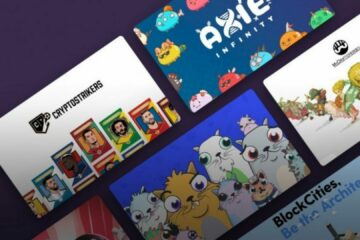A lot has been made of the “tokenization” of music and how it will save the industry.
But before we get into that, let’s talk about what a token is. Tokens are digital assets, like Bitcoin or Ethereum, that have an arbitrary value assigned to them by its creator. A person can create a token on their own computer and then assign any value they want to it – and since tokens aren’t regulated by governments or banks, there’s no way for anyone else to change this arbitrarily determined price. Once you’ve created your token, the only limit is your imagination: you can use tokens as currency in games; give them out as rewards for social media posts; even trade them with other people in exchange for goods and services.
While Bitcoin and Ethereum were the first widely known and widely used virtual assets, there are now thousands of cryptocurrencies out in the wild: Ether, Litecoin, Monero – pretty much anything you can name has been assigned a value by at least one person. One of the most popular types of cryptocurrency is non-fungible tokens (NFTs) – which are similar to Bitcoin and Ether, but unlike those coins, each individual NFT is unique and different from others like it (for instance, a Bitcoin can be exchanged for one-thousand Litecoins).
Most people that hear about this new technology start with the idea of trading these cryptocurrencies online: they see their value as an investment; they buy them in the hopes that they’ll go up in price. More recently, though, people have started using tokens not just as currencies or investments – but also as digital assets that represent physical things. Cryptokitties , for example, are non-fungible tokens that you can purchase and trade on the Ethereum blockchain. Each of kitties has different appearances and different costumes, and they can be bought and sold using ETH.
The Music Industry
While the idea of “tokenizing” things seems a bit abstract to some, musicians have been looking for new ways to integrate NFTs into their workflow for quite some time now. It’s not just Cryptokitties that are being used – digital collectibles of all kinds are becoming popular amongst people in music. One of the most interesting use cases is by musicians themselves who want to implement them into their work. For example, Ujo released an album in 2016 called Good Morning Mr. Orwell , where every song on the album was tied to its own unique token with its own value based on how much effort was put into creating it. From this, both the musician and the fan have a stake in that token – as more people buy it or interact with it, so does its value go up.
Is this sustainable? For now, yes. Tokens are still new enough to be novel to fans who might want something physical they can carry around with them. But there’s always the fear that these tokens will become devalued over time if it becomes too widespread, which is why musicians like Imogen Heap are trying to implement NFTs into their work by doing things like “mashing” different tokens together into one unit rather than having multiple separate tokens for each song on an album. As of right now, though, the music industry is just starting out with exploring what potential blockchain technology has to offer. As the years go by, we might see more and more musicians using this new technology in their music – or maybe even using it as a way to distribute free music from their websites. Who knows what the future could hold.
Is tokenization a sustainable replacement for royalty payments in the Music Industry?
Yes, it can be seen as a potential replacement for royalty payments by the simple fact that artists are receiving increasingly smaller royalties from streaming services like Spotify and Apple Music, while also being forced to share revenue generated elsewhere with other members of their organizations (i.e., labels). In an attempt to cut out these intermediaries, Bjork announced her last album would be released independently on blockchain technology through Ujo Music , which allows artists greater control over the way their work is being released and allowing for secure royalty payments.
Incorporating NFTs into artists’ music to empower fans, however, is a new phenomenon that hasn’t seen enough widespread adoption or research in order to conclude if it can be sustainable for musicians. Using tokens as a physical representation of digital work has been done before with QR codes on vinyl albums , but using them independently from a larger platform like RAC’s website to represent the entirety of the artist’s work – not just one particular album – is something we haven’t really seen used before (Cryptokitties are digital-only collectibles).



0 Comments